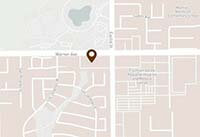Bariatric surgery is utilized for weight loss in people suffering from Morbid Obesity, but now Bariatric surgeons can also cure a common disease in obese patients…GERD (Gastroesophageal Reflux Disease)!
Transoral Incisionless Fundoplication (TIF) is a long-term incision-less procedure performed with an innovative FDA-approved EsophyX surgical device that corrects the deficiency at the gastroesophageal junction (also referred to as the “Z-line”), which causes heartburn and/or acid reflux, which are both common symptoms of GERD.
The procedure helps eliminate GERD by reconstructing a strong anti-reflux valve and tightening the Lower Esophageal Sphincter (LES), therefore reestablishing a barrier to reflux and restoring the competency of the gastroesophageal junction.
TIF is performed with the patient under general anesthesia, the procedure takes less than an hour and most patients go home the next day. The EsophyX device is inserted through the mouth and gently advanced into the esophagus under direct visualization of a video camera that is inserted down the central shaft of the device. The EsophyX device is then used to create and fasten several tissue folds, to create a strong anti-reflux valve at the gastroesophageal junction.
In the weeks following surgery, a natural healing process fuses and cements the tissue folds to create a robust anti-reflux barrier.
Recent studies conclude ALL patients discontinued their Proton Pump Inhibitors (PPIs) medication after the TIF procedure, and 79% remained completely off their daily medication two years after the procedure. Overall, patients reported 80% improvement in quality of life, with reduction/elimination of heartburn symptoms. Also, roughly 80% of patients experienced a reduction in their Hiatal Hernia, which is a defect in the diaphragm that allows the esophagus and top portion of the stomach to move from the abdominal cavity up into the chest cavity.
Overall, benefits of the TIF procedure performed with the EsophyX device allow for earlier and more effective intervention of GERD, thus minimizing the chances of developing malignant changes to the esophagus that may occur with long-standing GERD.





